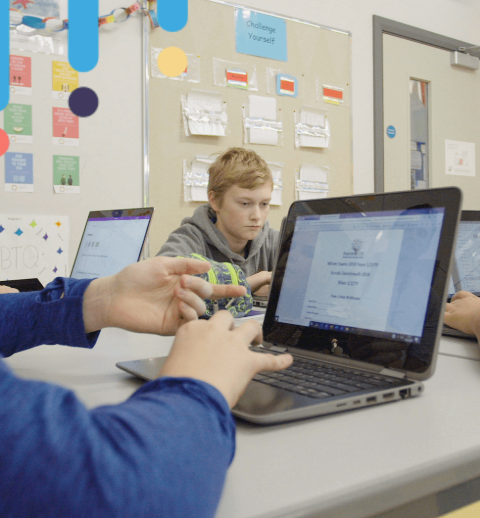In today’s digital learning environment, access to reading tools can significantly enhance students’ comprehension, fluency, and engagement with texts. Whether used for independent reading, research, or homework support, free online reading platforms offer features like read-aloud technology, vocabulary help, and interactive annotations. These tools can support students at all levels and help cultivate a lifelong love of reading. With the added benefits of accessibility and ease of use, these resources empower students to become confident, independent readers.
1. Epic!
Epic! is a free reading platform for students under 13 during school hours. It offers thousands of high-interest books, audiobooks, and educational videos. Teachers can assign reading materials based on grade level or topic, and students can explore content independently. Epic! also includes features like quizzes, progress tracking, and recommendations tailored to each student’s interests. It’s especially useful in classroom reading centers and distance learning environments.
2. ReadTheory
ReadTheory offers personalized reading comprehension practice through short passages followed by quizzes. The platform adjusts to a student’s reading level based on performance and tracks growth over time. It’s an excellent resource for building skills in inference, main idea identification, vocabulary in context, and reading speed. Teachers can create class accounts and assign reading tasks, making it easy to differentiate instruction.
3. CommonLit
CommonLit provides free reading passages for students in grades 3–12. Texts are accompanied by multiple-choice and open-ended questions, discussion prompts, and paired text recommendations. It supports standards-aligned learning and includes accessibility tools such as translation into multiple languages, text-to-speech functionality, and highlighting features. Students can search for passages by theme, genre, or literary device, making it an excellent tool for both English Language Arts and content area reading.
4. Storyline Online
Storyline Online features videos of actors reading children’s books aloud, accompanied by illustrations and animation. While geared toward younger students, high school learners studying education, child development, or storytelling may also benefit. Each video includes activity guides and suggested vocabulary, supporting literacy development in a fun, engaging format. It’s a helpful supplement for auditory learners or students in inclusive learning environments.
5. Project Gutenberg
Project Gutenberg hosts a vast collection of public domain books, including classic literature and historical texts. It’s ideal for high school students looking for free versions of texts like Pride and Prejudice, Moby Dick, or The Adventures of Sherlock Holmes. Texts are available in multiple formats, including ePub, Kindle, and HTML. Students doing literary analysis or historical research can use these full-text resources as primary documents.
6. Newsela
Newsela offers current event articles rewritten at different reading levels, allowing students of varying abilities to access the same content. Each article includes comprehension quizzes, writing prompts, and vocabulary practice. Students can explore topics in science, history, civics, and social-emotional learning. Teachers can assign articles and monitor student progress through the platform’s dashboard. It’s a versatile tool for building nonfiction literacy and critical thinking.
7. Rewordify
Rewordify helps students understand difficult texts by simplifying complex vocabulary and sentence structure. Students can paste in any text and receive a reworded version, along with vocabulary lists and definitions. It’s particularly helpful for struggling readers, English language learners, or students reading challenging grade-level content. Teachers can also create vocabulary quizzes and printable worksheets from the text.
8. Librivox
Librivox provides free public domain audiobooks read by volunteers around the world. Students can listen to classic works on the go, supporting auditory learning and comprehension. It pairs well with written versions found on Project Gutenberg. Students can download audiobooks or stream them online, making them ideal for long-term assignments or leisure reading. Librivox is also great for students with visual impairments or reading disabilities.
9. Actively Learn
Actively Learn is a platform where students can interact with texts by highlighting, annotating, and answering embedded questions. Teachers can assign articles, videos, or book excerpts and monitor student responses in real time. The platform also provides scaffolding features like translation, text-to-speech, and guided reading questions. Actively Learn aligns with Common Core standards and supports interdisciplinary instruction.
10. Open Library
Open Library is a digital initiative of the Internet Archive and offers access to millions of books. Students can borrow digital versions of contemporary and classic books and use built-in tools like text-to-speech, search filters, and bookmarking. The platform’s “Books for the Print Disabled” feature ensures accessibility for all learners, including those with dyslexia or low vision. It’s a valuable resource for research, literature assignments, and independent reading.
11. ReadWorks
ReadWorks offers a large collection of high-quality nonfiction and literary texts with built-in question sets and vocabulary activities. It supports reading comprehension development and content-area learning. Texts are leveled, and educators can create custom assignments, monitor progress, and group students by reading ability. ReadWorks also features a digital library that students can explore independently.
12. Learning Ally
Though not completely free for all users, Learning Ally provides free access for eligible students with learning differences such as dyslexia. It features human-narrated audiobooks for textbooks, fiction, and nonfiction content. Students with Individualized Education Programs (IEPs) or Section 504 plans may qualify for access through their schools or public funding.
Conclusion
Free online reading tools make literature, nonfiction, and news accessible to all learners. These platforms help students build reading fluency, improve comprehension, and gain confidence. Whether reading for pleasure, preparing for a class discussion, or conducting research, digital tools support learning across grade levels and subject areas. By integrating these tools into their daily study routines, students can develop a deeper appreciation for reading and achieve greater academic success. Educators, parents, and learners alike benefit from the accessibility and adaptability these resources provide in an increasingly digital learning landscape.














